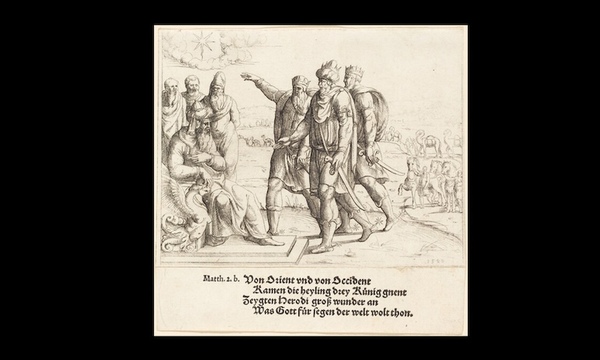The key insight of the Enneagram that Christians seem most attracted to—and that, in many people’s opinions sets it apart from other personality and strengths-finding tests—is its diagnosis of people’s sinful tendencies (what some Enneagramites refer to as “passions” and “fixations”). In other words, the Enneagram is supposed to help us identify nine detrimental paths down which we travel when we are stressed, tired, feeling needy, etc. These include: 1) anger and resentment, 2) pride, 3) deceptiveness, 4) melancholy and envy, 5) self-sufficiency, 6) fear and doubt, 7) pleasure-seeking, 8) domination, and 9) laziness.[1]
Before I offer a needed critique, let me acknowledge that there is much to commend in this. Christians need to be aware of their sinful tendencies. They need to become increasingly cognizant of the temptations that lure them. The Enneagram has called out a handful of these sinful tendencies. Furthermore, most of us can identify with one or more of the sin propensities listed above. Let us openly acknowledge this at the outset.
But not all is well in Enneagram-land. Let me list three concerns before I propose something constructive.
- Remember that the roots of the Enneagram are in the occult.[2] This means that we need to be extra vigilant as we assess its value. Granted, we should not immediately disqualify something based upon its origin (the classic genetic fallacy). Truth is truth, wherever it is found. Nevertheless, because of its origins, it is imperative that Christians pause and cautiously reflect before starting to ride the Enneagram train.
- I have described the above negative tendencies using Christian descriptors (“sins”), since I assume along with all Christians in history that sin is a real thing. But not all proponents of the Enneagram think that sin (thoughts and actions that displease a Holy God) is a valid category. Many proponents of the Enneagram appear to be utilitarian (that is, they attach value to what they deem helpful rather than harmful or what they observe leads to increased happiness rather than to unhappiness). We should keep this in mind when reading Enneagram literature.
- Has the Enneagram accurately identified the nine main areas that entice people to sin? Or has it left out some key temptations while overemphasizing others? If one’s starting-point is something other than God-revealed Scripture, it is reasonable to assume that something (somewhere!) in the system will be out-of-whack. This, in fact, appears to be the case with the Enneagram.
So, how can we be sure that our analysis of our sin tendencies is “in whack”?
What if we started with the Bible? What a novel suggestion!
If the Bible has something to say about the crucial question of our sin tendencies, then I would think that Christians should allow Scripture, rather than the Enneagram, to take the lead in diagnosing those tendencies. So I ask, does the Bible display any interest in our sin tendencies? Yes. Does it display any interest in addressing the relationship of one’s heart to sinful actions? Yes. If the Bible does indeed evince interest in such issues, perhaps we could start to work on alternative lists to the Enneagram that are rooted in Scripture, and use such lists—rather than the Enneagram—to diagnose our sin tendencies.
The two most on-point biblical lists in this regard are Jesus’s list of what proceeds out of people’s hearts and defile them (Matt 15:19; Mark 7:21-22) and the Apostle Paul’s deeds of the flesh (that are contrasted with the fruit of the Spirit) (Gal 5:19-21). These two lists are not comprehensive of all that is biblically relevant in this regard,[3] but at least they are biblical lists of our hearts’ sin tendencies. Our first list is Jesus’s list of what comes out of the heart (I have combined Matt 15:19 and Mark 7:21-22—and grouped together related items):
- Evil thoughts, coveting, envy
- Murder
- Adultery, sexual immorality, sensuality
- Theft
- False witness, slander, deceit
- Pride
- Foolishness
Our second list is Paul’s list of deeds of the flesh[4] (Gal 5:19-21—again related items are grouped together):
- Sexual immorality, impurity, sensuality
- Idolatry
- Sorcery
- Enmity, strife, dissensions, divisions
- Jealousy, envy, rivalries
- Fits of anger
- Drunkenness, Orgies
Now, let’s combine these two lists with the goal of creating an initial tool to diagnose people’s hearts. Furthermore, to pare down the list even further, let’s focus on issues of the heart rather than actions. The resulting combined list that particularly focuses on issues of the heart might look something like this:
- Envy
- Sensuality
- Deceit
- Pride
- Foolishness
- Idolatry
- Sorcery
- Rivalry
- Anger
It turns out that there is some overlap between the Enneagram diagnosis and this biblically-derived list. But even limiting ourselves to Jesus’s and Paul’s words, notice that there are heart issues—sin tendencies—missing on the Enneagram diagnostic chart, such as sensuality, foolishness, idolatry, and sorcery.
Furthermore, it should be remembered that there are other biblical lists that could help us augment our preliminary list,[5] but at least this list of nine gets the conversation focused on the Bible, which is in fact the point of this post.
Now, if I were to devise an attractive diagram for these nine (say, a circle), do you think I could sell it? (smile)
Come on, brothers and sisters. Let’s start thinking biblically about the tendencies of our hearts…[6]
Visit my recent post for a less-than-enthusiastic evaluation of Christopher Heuertz’s book, The Sacred Enneagram.
This post and other resources are available at Kindle Afresh: The Blog and Website of Kenneth Berding.
Endnotes
[1] I recognize that various Enneagram teachers describe the categories and attendant negative tendencies differently from one another.
[2] "Tell Me Who I Am, O Enneagram"
[3] Paul himself reminds us that his list is not comprehensive when he uses the expression “and such things” in Gal 5:21.
[4] The “flesh” in Paul, when used theologically, refers to sinful tendencies. That’s why it is so relevant to our discussion.
[5] Other lists that could be helpful in constructing a taxonomy of sinful propensities are Rom 1:29-31; 13:13; 1 Cor 5:10-11; 6:9-10; 2 Cor 12:20-21; Eph 4:31; 5:3-5; Col 3:5, 8; 1 Tim 1:9-10; 2 Tim 3:2-5; Tit 3:3; James 3:15; 1 Pet 2:1; 4:3, 15; Rev 9:21; 21:8; 22:15. For more on these lists, see J. D. Charles, “Vice and Virtue Lists,” in Dictionary of New Testament Background, Craig A. Evans & Stanley E. Porters, eds. (Downers Grove, IL: InterVarsity Press, 2000), 1252-1257.
 Biola University
Biola University
.jpg)
.jpg)

.jpg)